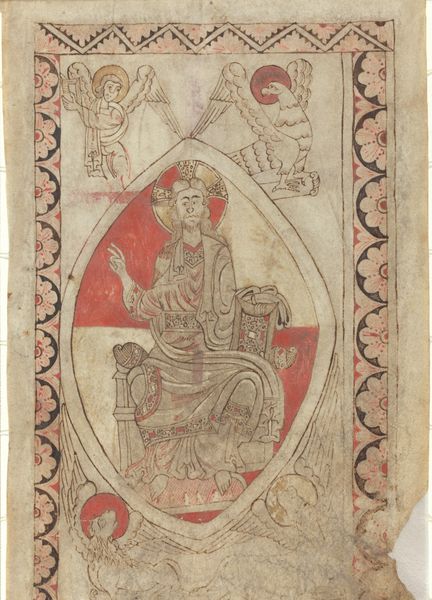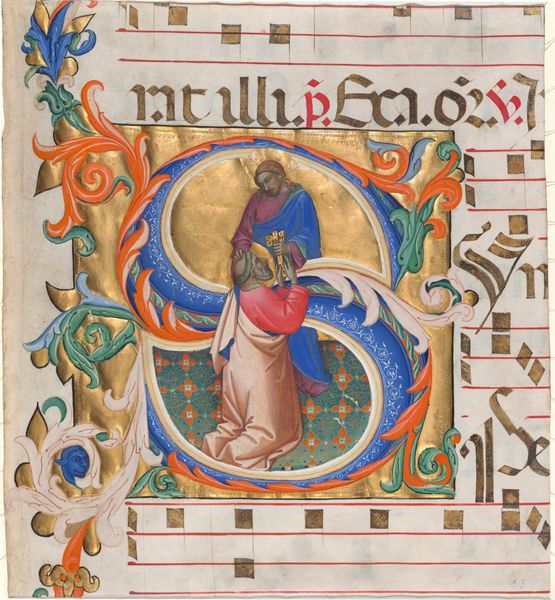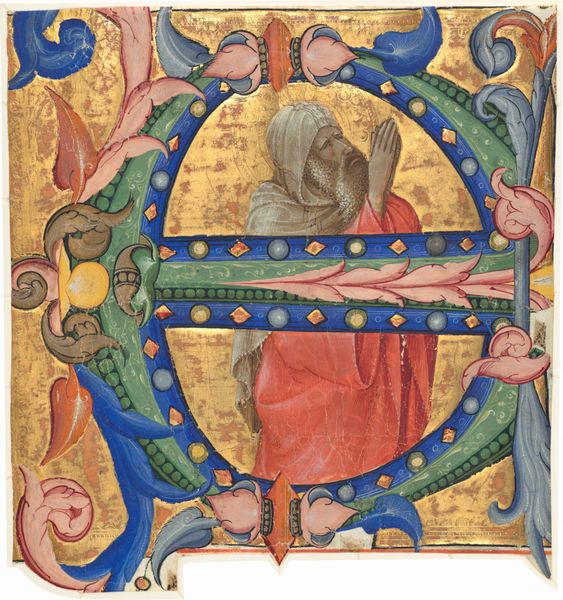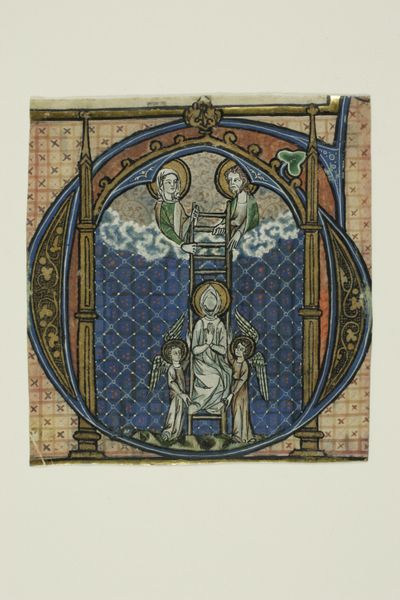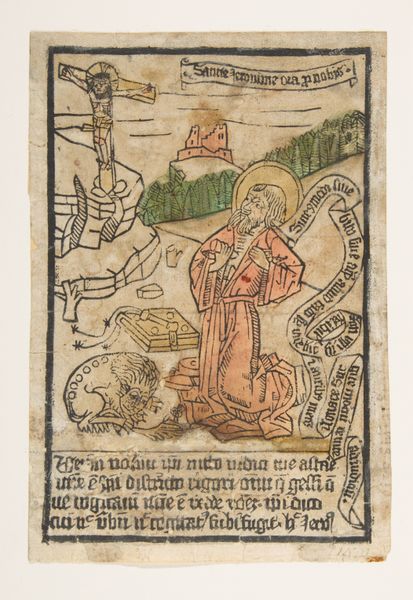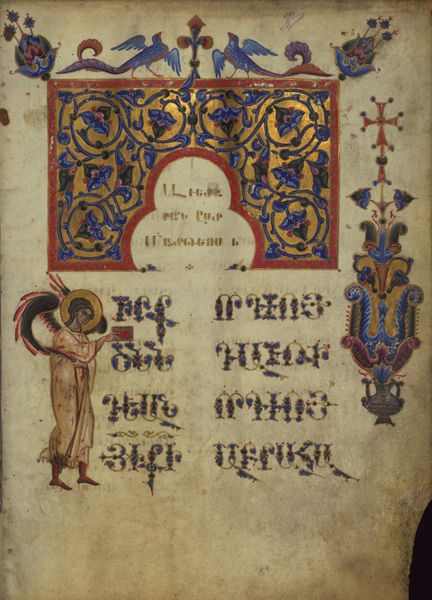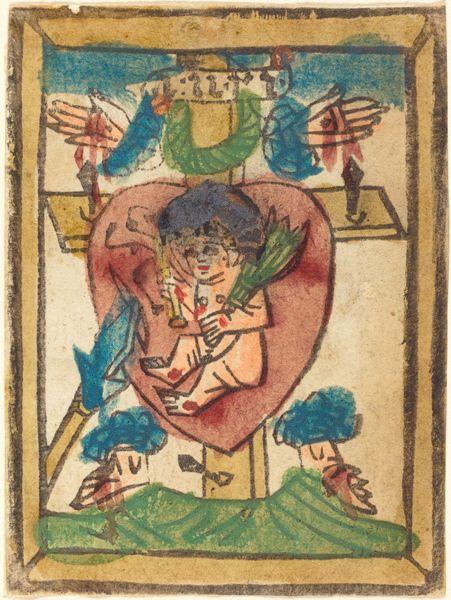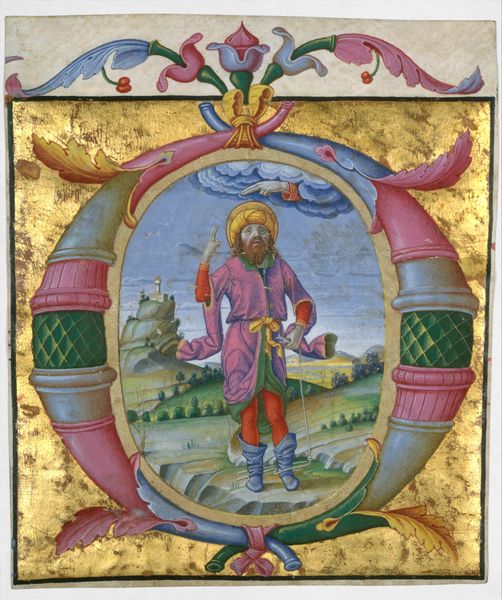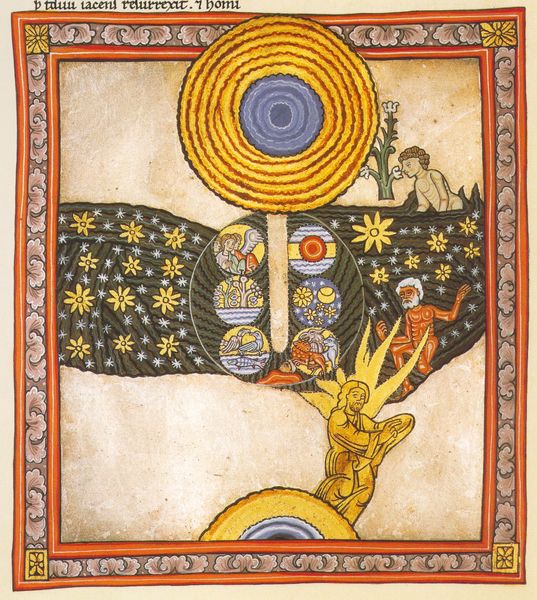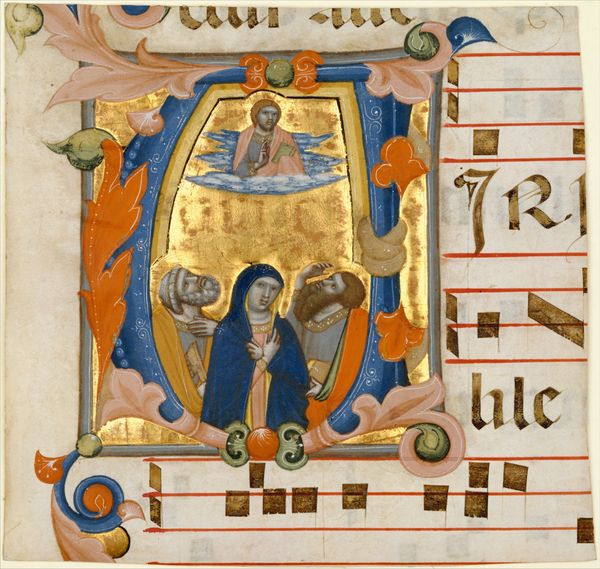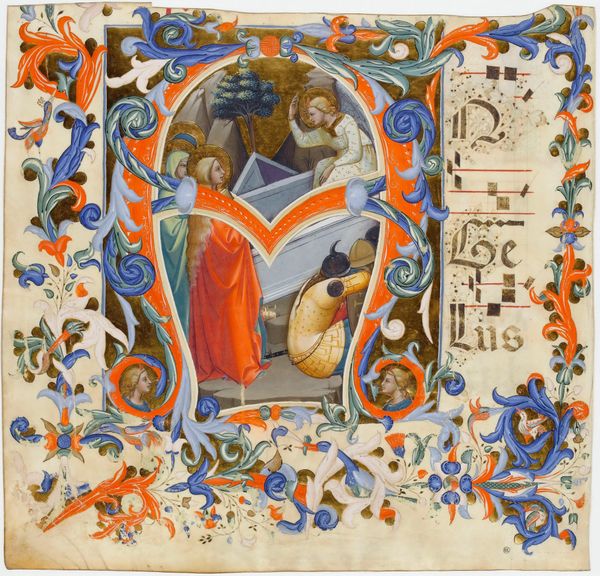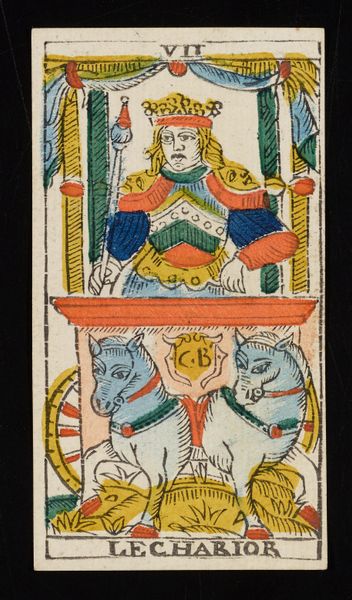
Manuscript Illumination with the Martyrdom of Saint Stephen in an Initial E, from a Gradual 1394 - 1402
0:00
0:00
#
pasteup
#
mural art
#
handmade artwork painting
#
acrylic on canvas
#
spray can art
#
naive art
#
men
#
watercolour bleed
#
watercolour illustration
#
italy
#
mixed medium
#
medieval-art
#
watercolor
Dimensions: Overall: 7 1/2 x 6 15/16 in. (19 x 17.6 cm) Mat size: 19 1/4 x 14 1/4 in. (48.9 x 36.2 cm)
Copyright: Public Domain
Curator: Today, we’re looking at a manuscript illumination from a gradual. This piece, dating from about 1394 to 1402, depicts the Martyrdom of Saint Stephen within a large initial "E". It was created in Italy by Niccolò di Giacomo da Bologna, and is currently held at the Metropolitan Museum of Art. Editor: Immediately, I'm struck by the contrast. There's a serene sort of order within the gilded letterform, almost a jewel-like quality, but the central image is so violent, so emotionally charged. Curator: The miniature's placement within the initial and on the page itself speaks to the role of illuminated manuscripts within religious and courtly life at the time. This wasn't art meant for mass consumption; it was precious, handled only by the clergy and privileged elite. The image illustrates Stephen being stoned. You can see a king looking on from behind a barrier as his tormentors assail him with rocks. It's all tightly packed into the roundel. Editor: Exactly, and it’s impossible to ignore the political undercurrent here. Saint Stephen being condemned by figures of authority really brings forth questions about the sanctioned use of state power against dissenting voices, a theme as relevant then as it is now. The way the executioners surround Stephen is terrifying and reminiscent of modern day police brutality. Curator: Well, these depictions also served a didactic function for their audiences; they served to affirm belief but to justify hierarchies too. Stephen’s suffering is ennobling; and those stoning him clearly represent unjust authority. How successful they are, given these complicated dynamics, is debatable, but that seems to be what's being offered to a contemporary audience. Editor: I see that tension clearly, the power dynamics encoded not just in the scene, but in who this book was created for. It makes you think about art’s role – does it challenge or legitimize the status quo? It's definitely both here. Curator: Absolutely, and approaching it from both directions at once only underscores this inherent and inevitable friction. Thank you for that insightful commentary. Editor: And thank you for helping me to think critically about this fascinating and evocative manuscript.
Comments
No comments
Be the first to comment and join the conversation on the ultimate creative platform.

